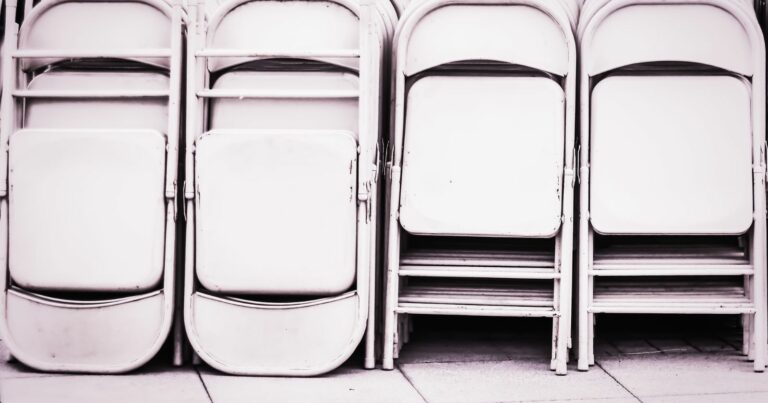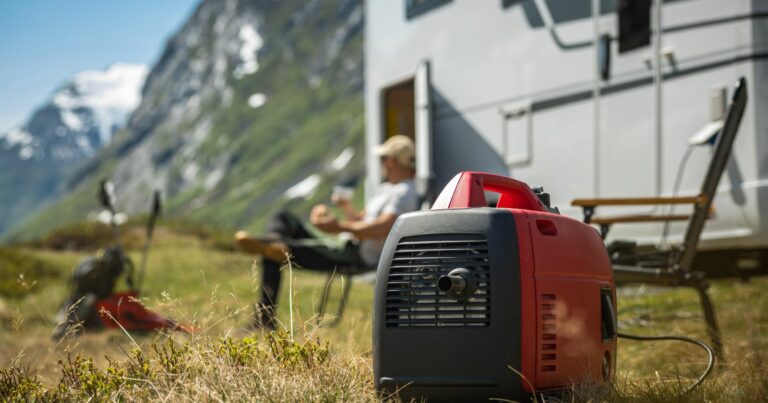How to Hang a Tarp on a Wall: A Step-by-Step Guide for Beginners
Have you ever wanted to add a splash of color or texture to your home’s decor? Hanging a tarp on an interior wall can be a unique way to transform any room. But if you’re new to home improvement projects, you may not know where to start when it comes to properly mounting a tarp.
Not to worry – with the right preparation and hardware, you can easily hang a tarp on a wall yourself. The key steps are choosing hardware that can handle the tarp’s weight, measuring the wall and tarp size, marking where the hardware will go, securely installing the hardware, hanging the tarp, and making any needed adjustments.
Follow those simple steps, and you can display a tarp indoors in no time. We’ll walk through each one below, using clear instructions tailored for beginners. With a little planning and effort, you can gain a brand new, eye-catching accent on any wall. Just be sure to follow the manufacturer’s directions for your specific tarp and mounting kit.
Let’s get started on projecting your style through a perfectly hung tarp. This unique project can makeover your room’s look.
Choose the Right Hardware for Hanging the Tarp
The first step is selecting hardware that can handle the weight and size of your tarp. Here are some common options:
- Sleeve expansion joints – These metal joints fit over screws mounted on the wall. They have openings you can slide the tarp’s edges into.
- Tarp fasteners – These claw-style clips grip the tarp’s edges once screwed into the wall. They’re easy to install.
- Bracket loops – Loops screwed into the wall hold the tarp in place. They work for lightweight tarps.
Consider the tarp’s thickness and density when choosing hardware. Heavier tarps will require more support. Check the hardware’s weight rating as well.
Get an amount that fits the tarp’s length. Having enough hardware will distribute the weight evenly.
Measure the Wall Area and Tarp
Before installing hardware, you need to find out:
- The dimensions of the wall area you want to hang the tarp on
- The exact length and width of the tarp
Use a tape measure to get accurate measurements. Write down the wall area and tarp dimensions.
This info lets you map out hardware placement. It also ensures your tarp will fit the space perfectly.
Mark Where the Hardware Will Go
Use a pencil to lightly mark the exact spots where you’ll attach the hanging hardware.
If using sleeve joints or fasteners, mark along the top and bottom edges of where the tarp will hang. Space the marks evenly across the length.
For bracket loops, make marks where the top corners and bottom corners of the tarp will be.
The marks should be level with each other. Measure twice to double-check. This prevents the tarp from hanging crooked later.
Install the Hardware onto the Wall
Follow the manufacturer’s instructions to correctly mount the tarp hanging hardware you picked out.
For most types, you’ll need to:
- Drill pilot holes in the marks you made. Use a drill bit suited for the hardware’s screws.
- Drive the screws through the hardware and into the wall using a screwdriver. Do not overtighten.
- Double-check that all hardware pieces are securely attached and flush to the wall.
Using the right tools and taking care during installation prevents issues down the line.
Hang the Tarp on the Mounted Hardware
Once the base hardware is firmly screwed into the wall, you can drape your tarp over it.
For sleeve joints, slide the tarp’s upper edge into the top joint openings. Let the lower edge rest in the bottom sleeve.
With fasteners, press the edges into the gripped claws spaced along the wall.
For brackets, place the tarp’s corners over the topped loops or into the bottom loops.
Make sure the tarp lays centered over the hardware. Pull it taut for a flat appearance.
Adjust the Tarp so It’s Secure and Straight
Examine the mounted tarp from all angles to check its positioning. Make any needed adjustments:
- Tighten or loosen the hardware if the tarp seems loose or saggy when flat.
- For sleeve joints/fasteners, slide the tarp left or right for better centering.
- With bracket loops, adjust the corner angles until the tarp looks rectangular.
- Use pencil marks on the wall as guides for realigning the tarp.
Play around until the tarp sits perfectly flush and square on the wall.
Extra Tips and Tricks
- For a lightweight tarp, use double-sided tape or command strips instead of hardware.
- Add grommets along the edges for another hanging option. Use hooks on the wall to thread rope through.
- For outdoor use, treated canvas or vinyl tarps hold up better than regular poly tarps.
- Use tarps in creative ways – as photo backdrops, room dividers, ceiling accents, and more.
- Look for tarps with stylish designs, patterns, or colors to enhance the decorative effect.
- Layer multiple lightweight tarps over each other for a textured look.
- Hang the tarp first, then add hardware connections to keep it centered and taut.
Common Questions
What kind of tarp should I use?
Indoor tarp displays work best with lightweight tarps or sheets made of nylon, canvas, polyester, cotton, or vinyl. Heavy duty outdoor tarps may be too bulky.
Where can I buy tarp hanging hardware?
Many home improvement stores sell tarp hardware in the roping, hardware, or building supplies sections. You can also find specialty tarp mounting kits online.
How do I cut a tarp evenly for sizing?
Use a sharp utility knife and metal straightedge as guides to slice tarps cleanly. For canvas, use good scissors. Make sure to measure carefully first.
What if my wall material won’t support screws?
For drywall, use hollow wall anchors. For brick, use masonry screws. Concrete may require a drill for pilot holes so hardware will stay put.
How can I remove a tarp from the wall later on?
Simply detach the hardware from the wall or tarp edges. This allows the tarp to be easily taken down. Patch up any remaining holes or marks left behind.
FAQs
What’s the best way to clean an indoor tarp wall display?
Use a soft brush and mild soap and water to gently clean the tarp. Avoid harsh chemicals. For canvas and cotton, a very light bleach solution can also disinfect and brighten it up. Rinse off completely after cleaning.
How can I hang a tarp on a concrete or brick wall?
You’ll need a masonry drill bit to pre-drill pilot holes. Insert masonry anchors before screwing in the hanging hardware. This keeps the hardware firmly mounted.
Is there an easy way to create folded points and drapes?
Yes! Attach double-sided Velcro strips near the tarp’s corners. Fold over the corners, press together the Velcro strips, and the folds will stay put. Strategically placed strips can make precise drapes too.
What should I do if my tarp has mold or mildew?
First, take down the tarp and give it a thorough cleaning by hand or in the washing machine if possible. Kill existing mold and mildew using lemon juice, vinegar, borax or bleach solutions. Be sure to rinse it completely before re-hanging.
How do I patch rips or holes in my tarp?
For small holes, use a tarp repair tape or patch kit. Cut patches from excess tarp to fix larger holes and tears. Use fabric glue or adhesive caulk to seal the edges of patches. Secure them behind with glue or tape for permanent repairs.
Conclusion
Adding an indoor tarp wall display is a simple DIY project for decor customization. With the right tarp, hardware, and preparation, you can stylishly transform any space. Use this guide to confidently hang a tarp like a pro.
Just take it step-by-step. Measure twice, use sturdy hardware, and adjust until the tarp fits perfectly. Soon you’ll have an artistic focal point that makes a bold statement.
So try out this unique decorating idea. Draping a colorful tarp on an accent wall or for events can instantly liven up the look of any indoor area.







